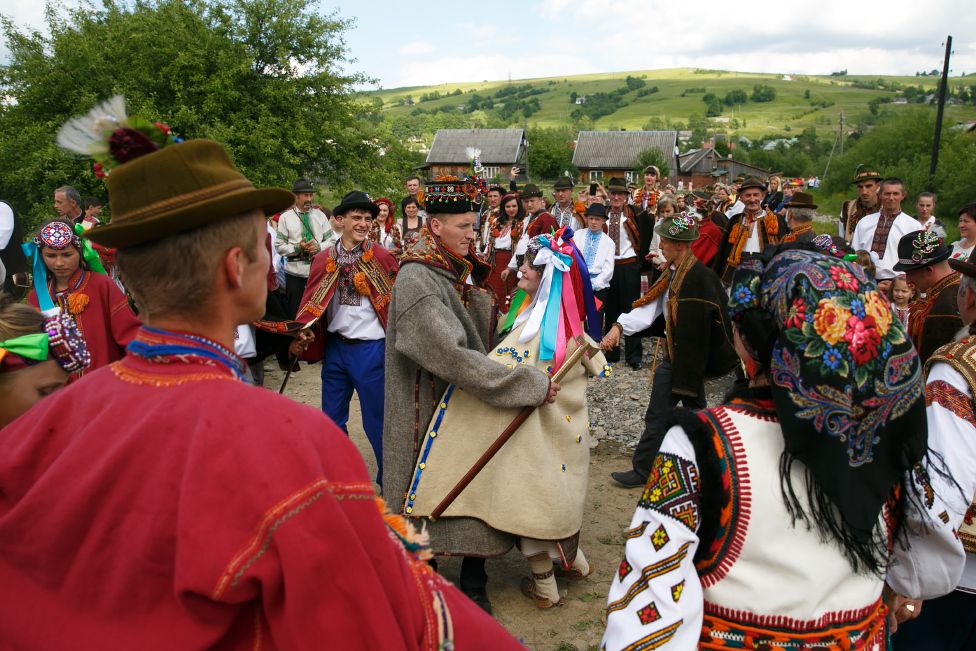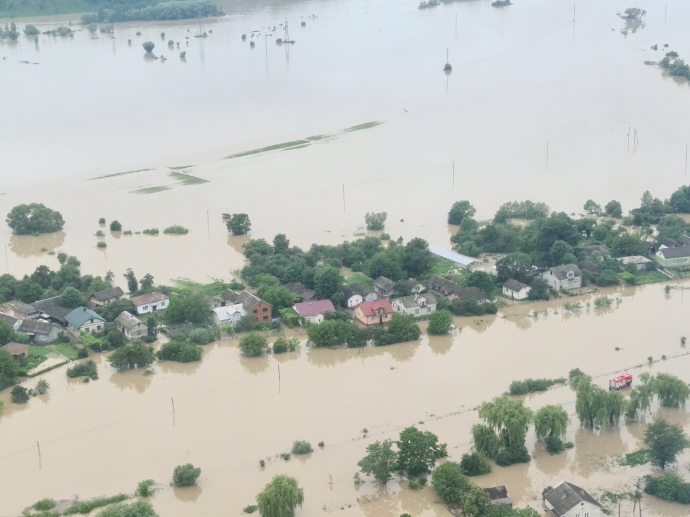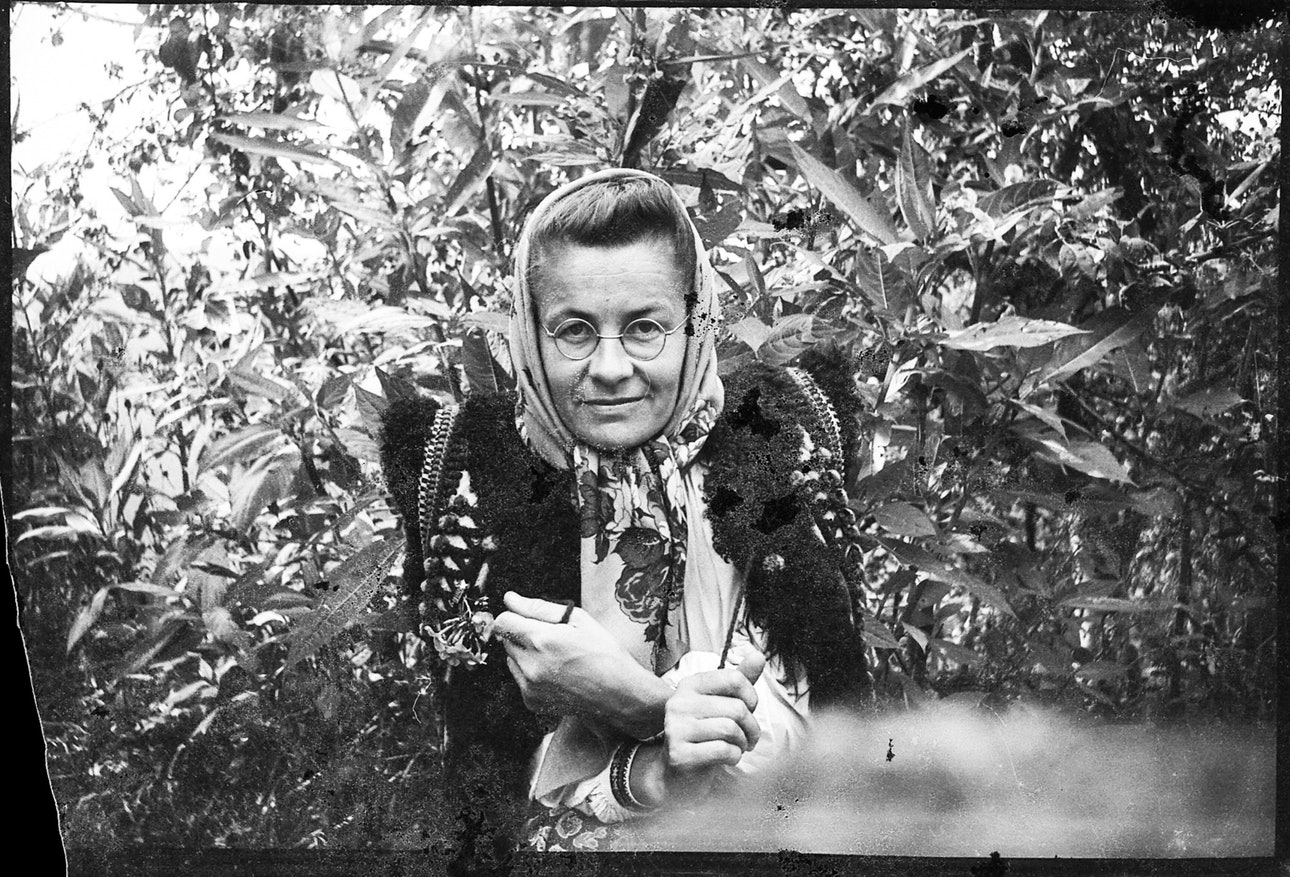A traditional Hutsul wedding was celebrated in the Carpathian village of Yasinia, Rakhiv Raion, Zakarpattia Oblast. The bride and bridegroom were dressed in Hutsul folk costumes, rode to church horseback, and made merry in a specially mounted pavilion tent.
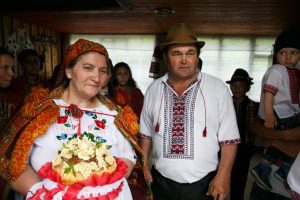
 Many Yasinia villagers still live like their ancestors. They cultivate their own land, grow what’s needed and tend sheep, horses, pigs, turkeys, chickens and cows. Both children and grandchildren help take care of the livestock.
Many Yasinia villagers still live like their ancestors. They cultivate their own land, grow what’s needed and tend sheep, horses, pigs, turkeys, chickens and cows. Both children and grandchildren help take care of the livestock.
 A Hutsul wedding is very ceremonial. There are so many rituals, traditions and events that the newlyweds don’t have a minute of free time. The bridal dressing process lasts almost two hours: the bride’s hair is carefully braided into four tresses and she ceremoniously bids farewell to her family home.
A Hutsul wedding is very ceremonial. There are so many rituals, traditions and events that the newlyweds don’t have a minute of free time. The bridal dressing process lasts almost two hours: the bride’s hair is carefully braided into four tresses and she ceremoniously bids farewell to her family home.
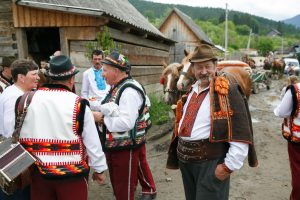 While the bride is being adorned and dressed, her mother and father welcome guests and neighbours in the family courtyard. Only women are allowed into the house… that is, only one man can enter the bridal dressing room and that’s the violinist!
While the bride is being adorned and dressed, her mother and father welcome guests and neighbours in the family courtyard. Only women are allowed into the house… that is, only one man can enter the bridal dressing room and that’s the violinist!
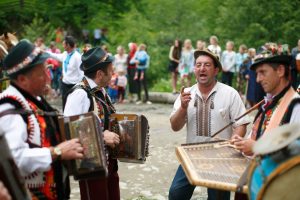 There’s no Hutsul wedding without live music! Different bands and musicians alternate so that the music never stops.
Mariya Moskaliuk cries when her daughter leaves the family home… even though Anzhela won’t be living too far – just over the hill, an hour away from her parent’s home.
There’s no Hutsul wedding without live music! Different bands and musicians alternate so that the music never stops.
Mariya Moskaliuk cries when her daughter leaves the family home… even though Anzhela won’t be living too far – just over the hill, an hour away from her parent’s home.
 The bride looks through the hole in a “kolach” (a sort of bagel-Ed.) and turns it towards the four cardinal points.
The bride looks through the hole in a “kolach” (a sort of bagel-Ed.) and turns it towards the four cardinal points.
 Guests travel in carts and cars to the centre of the village to meet the bride’s family.
Guests travel in carts and cars to the centre of the village to meet the bride’s family.
 Ivan and Anzhela on the way to the church…crossing the river over a suspended bridge.
Ivan and Anzhela on the way to the church…crossing the river over a suspended bridge.
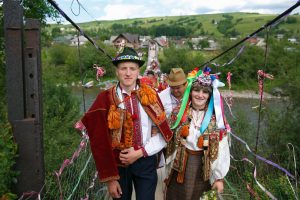 A cart makes its way across the river. The others parked on the river bank and the guests made their way on foot.
A cart makes its way across the river. The others parked on the river bank and the guests made their way on foot.
 The father and mother of the bride rejoice together with the bridesmaids and grooms (6 couples in all).
The father and mother of the bride rejoice together with the bridesmaids and grooms (6 couples in all).
 “We managed to organize weddings for only a few of our children.” says Mariya, mother of the bride, “Most of them just went to the Registry Office and afterwards, we had a small celebration at home. Anzhela’s the lucky one as she gets a real Hutsul wedding. Today, young people want to celebrate in an easier and more modern way… in a café or restaurant.”
Family photo – the bride and bridegroom, parents, bridesmaids and grooms and “starosta” (usually family elders that help the newlyweds and lead all the rituals and ceremonies-Ed.).
“We managed to organize weddings for only a few of our children.” says Mariya, mother of the bride, “Most of them just went to the Registry Office and afterwards, we had a small celebration at home. Anzhela’s the lucky one as she gets a real Hutsul wedding. Today, young people want to celebrate in an easier and more modern way… in a café or restaurant.”
Family photo – the bride and bridegroom, parents, bridesmaids and grooms and “starosta” (usually family elders that help the newlyweds and lead all the rituals and ceremonies-Ed.).
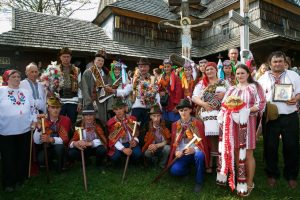 Bridesmaids wear glass and bead headdresses, traditional headwear for women in Rakhiv Raion.
Bridesmaids wear glass and bead headdresses, traditional headwear for women in Rakhiv Raion.
 The feast continues in a pavilion tent called “shalash”, mounted in the courtyard of the groom’s home. 150 guests have been invited to Anzhela and Ivan’s wedding.
This Hutsul wedding couldn’t have been organized without the assistance of the village council, which provided the newlyweds with traditional outfits, musicians and horses.
The feast continues in a pavilion tent called “shalash”, mounted in the courtyard of the groom’s home. 150 guests have been invited to Anzhela and Ivan’s wedding.
This Hutsul wedding couldn’t have been organized without the assistance of the village council, which provided the newlyweds with traditional outfits, musicians and horses.
 Tired newlyweds at the end of the second wedding day. The first day of the wedding celebration ended at about 7:00 in the morning, so the couple had only a few hours of sleep before getting ready for the second day.
Tired newlyweds at the end of the second wedding day. The first day of the wedding celebration ended at about 7:00 in the morning, so the couple had only a few hours of sleep before getting ready for the second day.
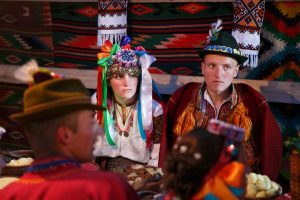 Photos and text: Maksym Balandiukh
Photos and text: Maksym Balandiukh

